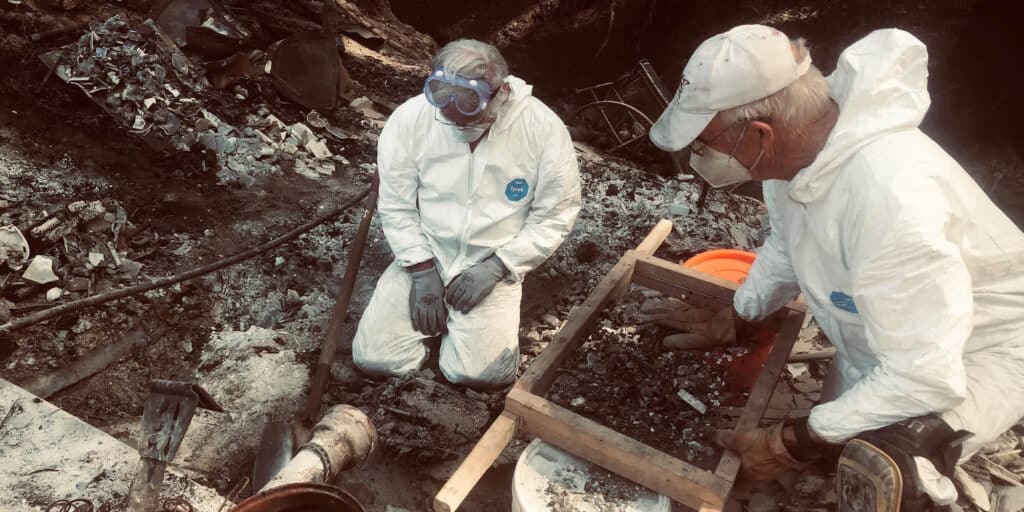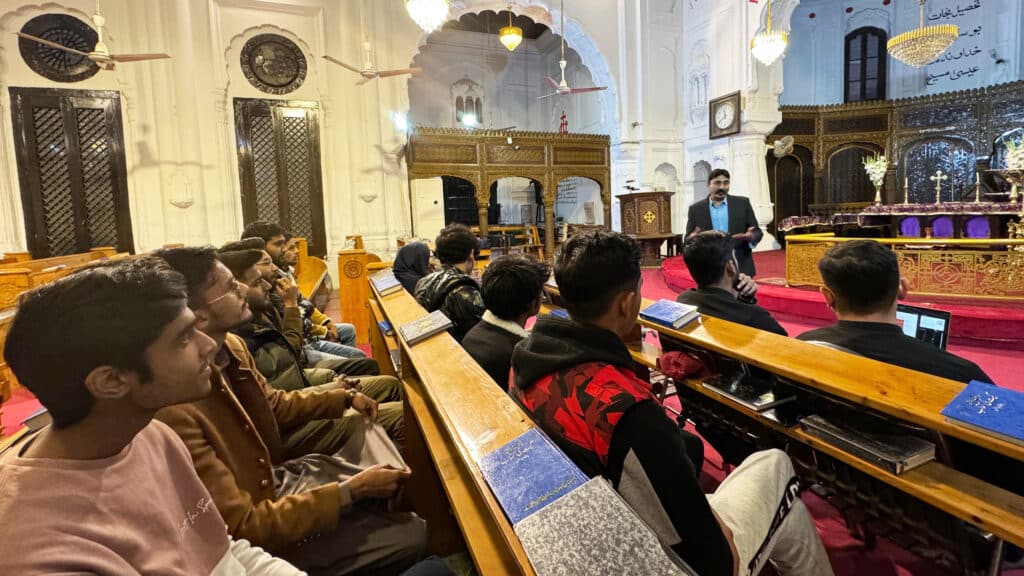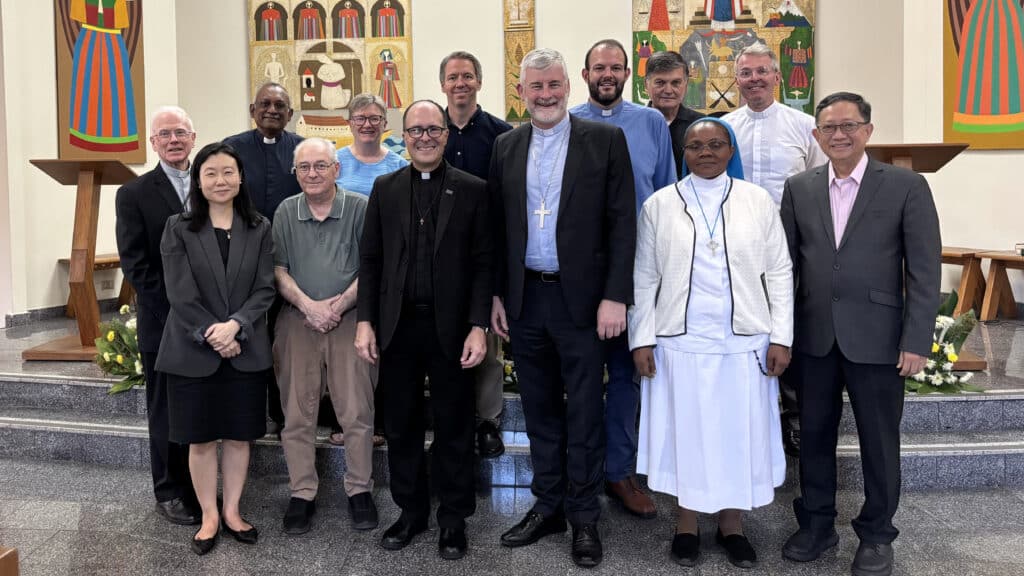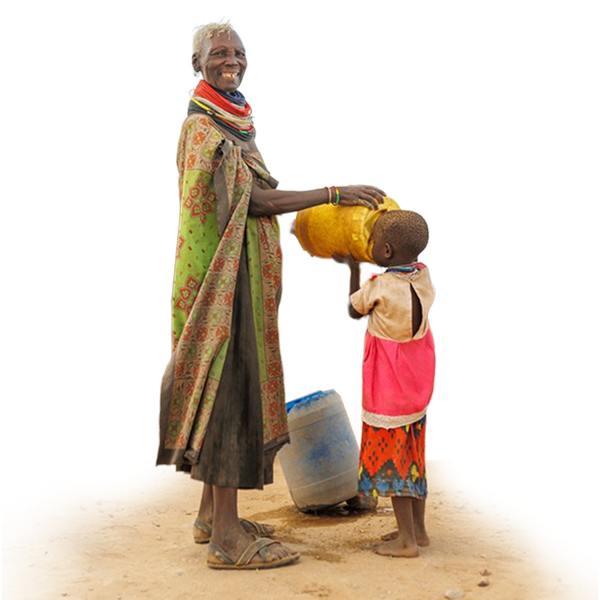ATLANTA — Henry* made a life choice to live off the grid in Northeastern California. He owned a piece of land in the Plumas National Forest, northwest of Reno, Nevada. At 71, he was still spry and healthy. He could take care of himself, and he lived with his cat in a trailer on his land. He had solar panels and propane for energy. He paid no bills and, except for Social Security, had no attachment to any public agency. That was just the way he wanted it, the way he’d planned his retirement.
That is, until three major wildfires engulfed the Plumas National Forest area in August this year. Henry lost everything, his trailer, his car and everything on his land. He made it out with only his cat and hitched a ride with someone leaving the burning forest.
Sonja Edd-Bennett, director of Disaster Response Ministry for the California-Nevada Conference, says Henry stopped by the UMCOR/California-Nevada response table at one of the local assistance centers set up to help wildfire survivors of the Plumas fires.
“His story really sticks with me,” Edd-Bennett said. “He said: ‘I’m sitting before you, a 71-yr-old man, homeless, with nothing more than a cat and $865 a month in income. I never thought I would be homeless at 71.’ He was living in a borrowed car.”
“These are mountain people,” she continued. “There are a lot of people in Northern California who live as multiple generations on the land. They live in nontraditional housing, a trailer or an out-building, or sometimes even a tent in the backyard. If that structure does not have a permit and was not assessed by a tax assessor, then it is not eligible for government relief funding.”
Henry paid taxes on the land he owned, but he did not have a permit for the trailer as his residence. He did not qualify for FEMA assistance because he didn’t have a building and his address was only the road.
“We anticipate we will see a lot of people like Henry in Butte County,” Edd-Bennett explained. She said her biggest concern is for those people who live off the grid.
Multiple fires across Western states
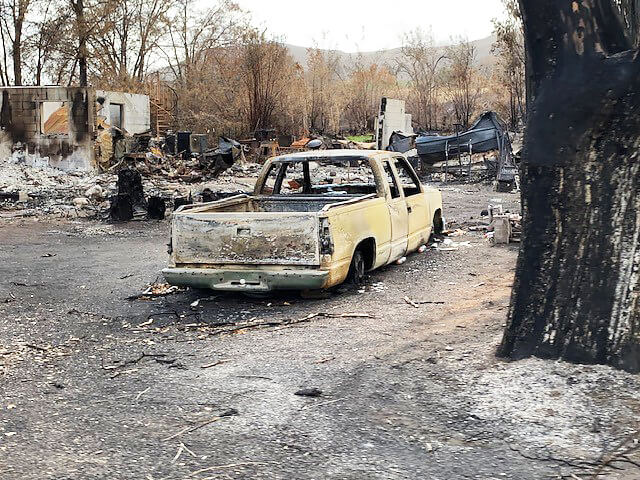
Wildfires have an annual season in the Western states. At one time, August and September, the dry months, were the most likely times to encounter them. Lately, however, the season has stretched from the spring to November and the quantity and sizes of fires have increased. When the fires converge, they are called “mega-fires.”
This year has been a particularly difficult year, as mega-fires have impacted almost all UMC conferences in the Western Jurisdiction. In addition to the California-Nevada Conference, the Pacific-Northwest and Oregon-Idaho conferences have also received multiple UMCOR grants to support wildfire responses.
In Washington state, almost a half-million acres have burned, and the number of fires is close to 1,000. Dana and Kathy Bryson, who serve as disaster response coordinators for the Pacific-Northwest Conference, describe the year as atypical.
“The entire Pacific Northwest experienced a freak combination of intensely dry weather and intense heat, and winds came in and drove the wildfires. It was breathtaking,” noted Dana Bryson.
The last time they had a season like this was 2014-2015. This year Okanogan County was hit hard, and a few towns, Malden and Pine City, were destroyed just outside Spokane.
Kathy Bryson had spent volunteer hours with the California-Pacific Early Response Teams last year as they responded to wildfires in southern California. She joined the team in a Los Angeles County Multiagency Response Center. She noticed a man on the team who was bringing in ash sifters every day. He was building about 15 of them every night, and people took every sifter he brought. The Brysons decided to use part of the grant to do a pilot program with churches in Kennewick and Cheney, Washington, setting up the churches with materials and instructions to build the sifters.
In addition, the teams are distributing UMCOR hygiene, cleaning, and school kits. Dana had just heard that 41 children in Okanogan County lost homes that burned to the ground. The Brysons are managing three grants for relief efforts, two from UMCOR and one from Americares. The population they feel to be most vulnerable is migrant agricultural workers, who may not speak English and receive no state or federal benefits.
In the Oregon-Idaho Conference, Dan Moseler, the interim disaster response coordinator, said his conference was also taking care of migrants who are undocumented and uninsured.
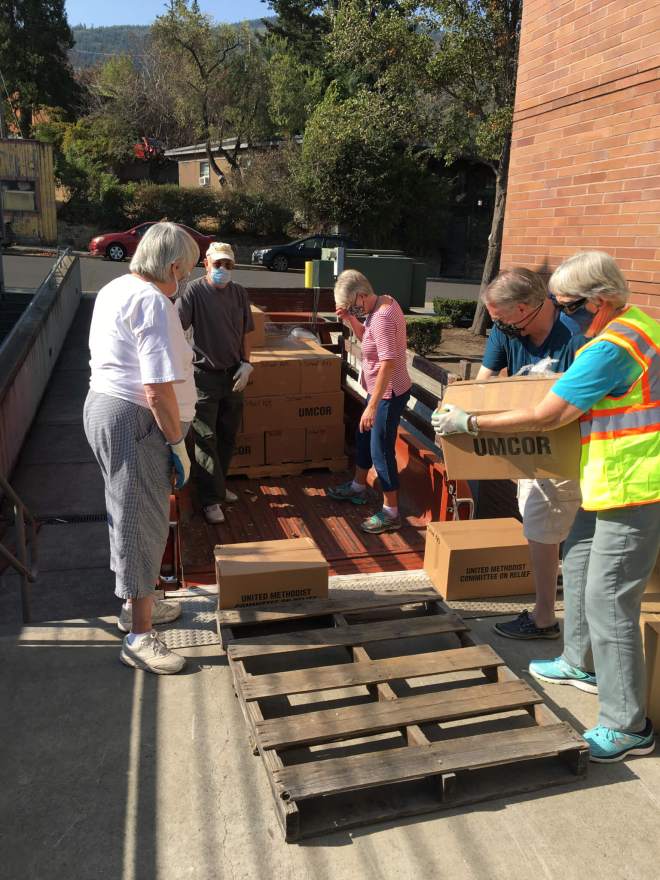
PHOTO: BARRY BRADEN
“The aid we provide is the only aid they get,” he said. In Oregon alone, 1.2 million acres have burned, with 1,400 structures destroyed and nine fatalities. Idaho has lost about 315,000 acres. In Jackson County, Oregon, the towns of Medford, Ashland, Phoenix and Talent experienced major damage.
“The highest demand is for kits – school kits and cleaning kits. In the Phoenix-Ashland school district, 40% of kids ended up homeless. Teachers picked up kits, so students would have something to start the school year. The Ashland United Methodist Church opened for the school district to set up internet WiFi, to give the children a chance to learn remotely. Medford UMC is looking to do same thing,” Moseler noted.
The UMCOR grant has allowed the Oregon-Idaho Conference to release grants to churches in Ashland and nearby that have families in their congregations who lost their homes.
A long road to recovery
California has lost over 4 million acres to wildfire so far this year, with the number of fires at more than 8,600 incidents, close to 10,000 structures lost, and 31 fatalities.
One of the relief tools made possible by the UMCOR grant for the California-Nevada Conference Disaster Response teams is the Wildfire Bucket. The buckets, put together by the disaster response office, Early Response Team volunteers and congregations, have the personal fire protection equipment necessary to return to a burned-out home, with a tarp and gloves, small hand tools, a large rake and a shovel to sift through ash.
“The UMCOR grant enabled us to purchase a large quantity of supplies for the buckets so we could send them out quickly. Churches also continue to send supplies and buckets in,” said Edd-Bennett.
“Our Early Response Team members set up tables at local assistance centers, and we do an intake with whomever comes to our table. We have an opportunity to provide spiritual and emotional care and listen to their stories. We discern what we have and how that fits with what they need,” she continued.
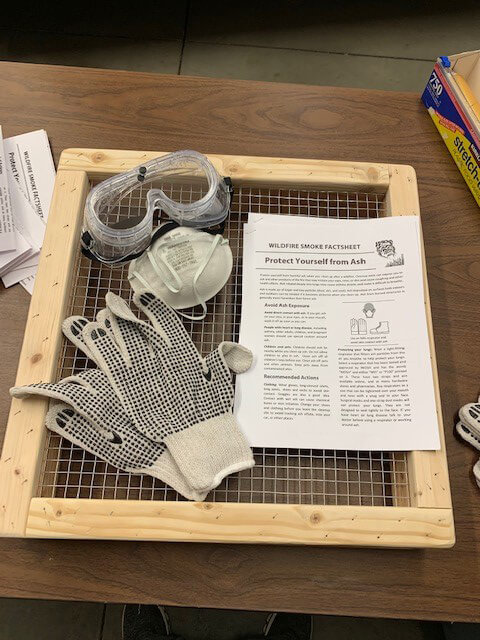
PHOTO: KATHY BRYSON
The teams ask people if they are interested in having someone come back to their property with them to sift through the ashes once they receive the all-clear to return. “People are sometimes traumatized by the experience and they want us to go with them the first time they return home,” Edd-Bennett said. “They can see we are a caring presence, and they want the support of a caring presence to go with them.”
The danger involved with an active wildfire means that disaster response happens on a long timetable. “What I share with the communities and I remind even our ERTs, is that UMCOR will journey with them through this disaster. Although the major response can’t begin until the fires are under control, we aren’t going anywhere,” said Lara S. Martin, director of U.S. Disaster Response for UMCOR.
There is a lot to be done for evacuees and for those who have lost their homes. In coordination with federal, state and local agencies, faith-based and nonprofit groups offer material, emotional and spiritual support. But with COVID-19 spreading as fast as the fires, even that takes some extra time, planning and equipment.
Still, congregations and churches want to help in whatever ways possible. “I think that it is a privilege to be able to participate in disaster response ministry,” Edd-Bennett reflected. “It is a calling. You’re either called or you’re crazy.”
But in the craziest times of their lives, survivors welcome the craziness of people who listen to their stories of loss and go the extra mile to help them on the road to recovery.
*Name has been changed.
Christie R. House is a consultant writer and editor with Global Ministries and UMCOR.
